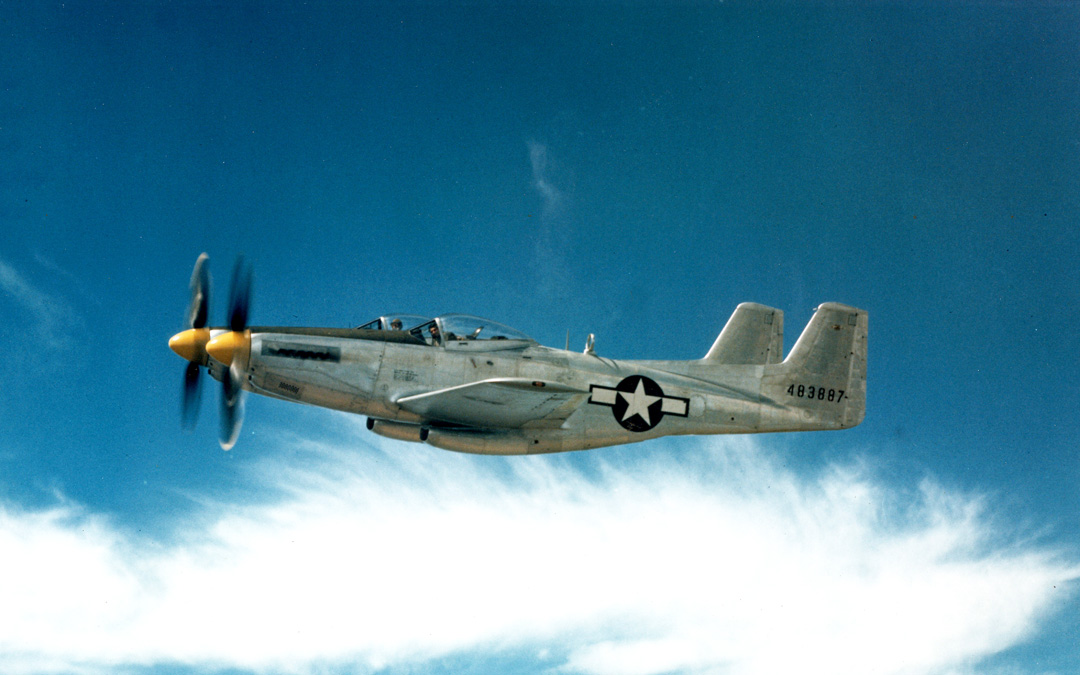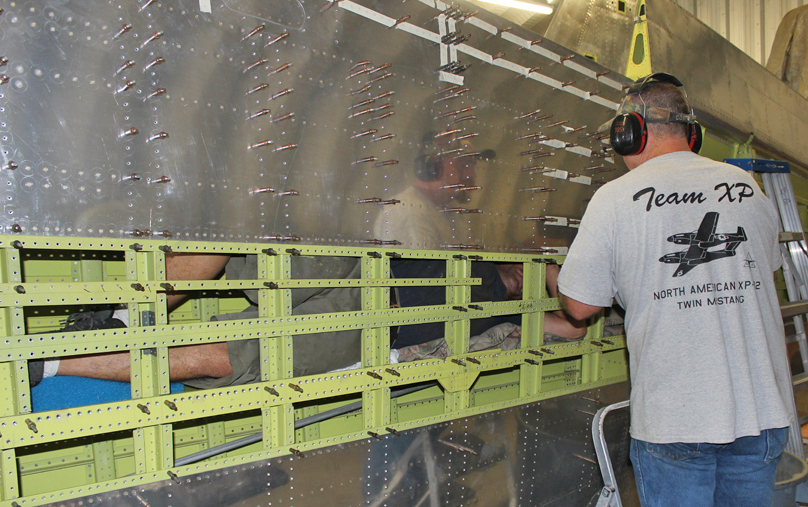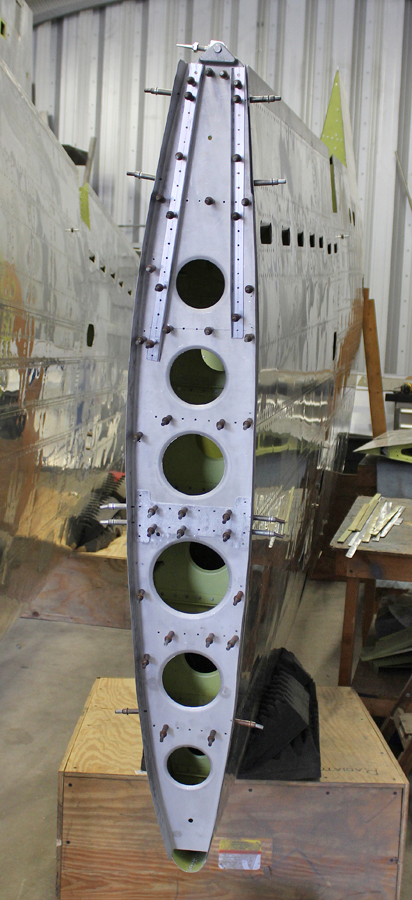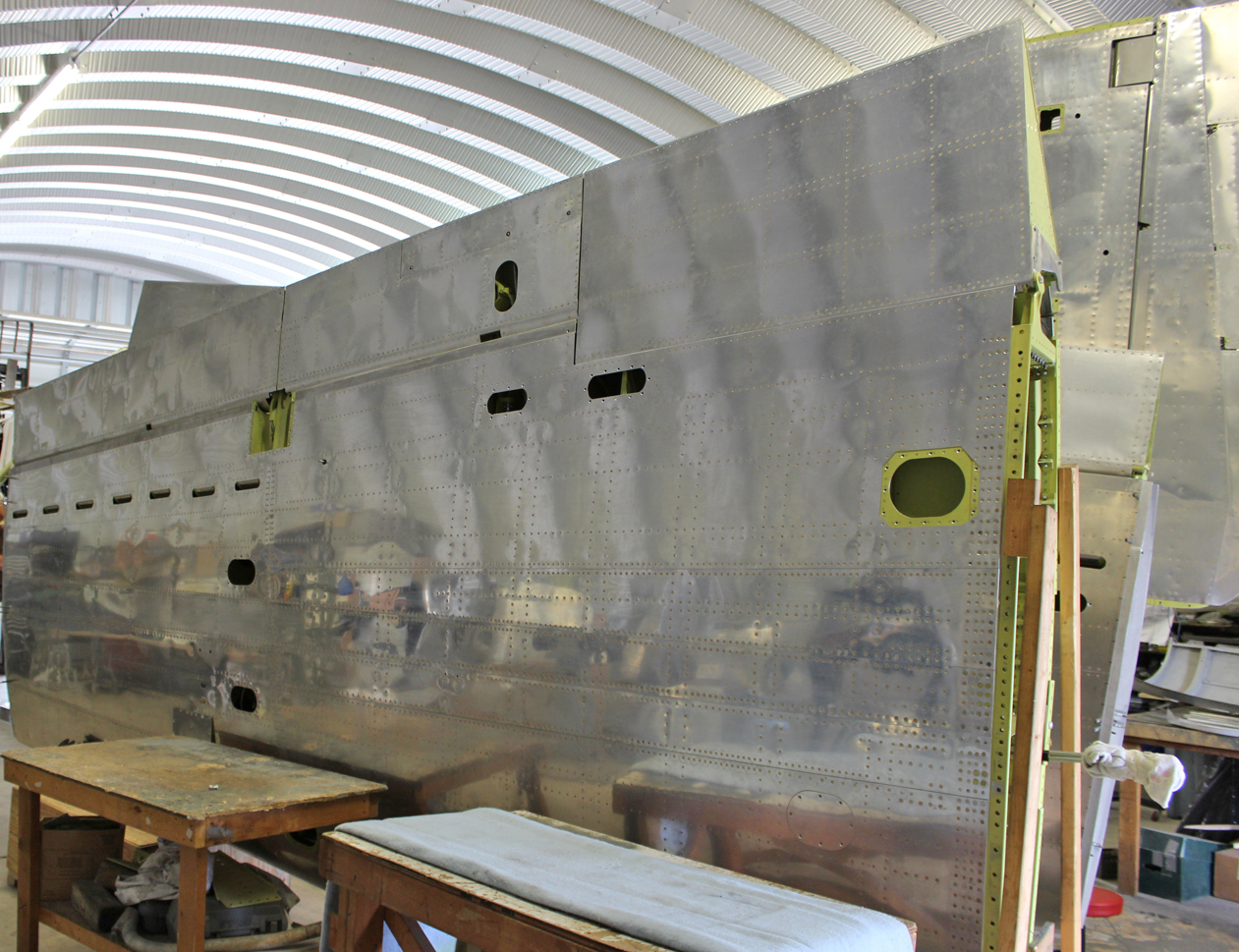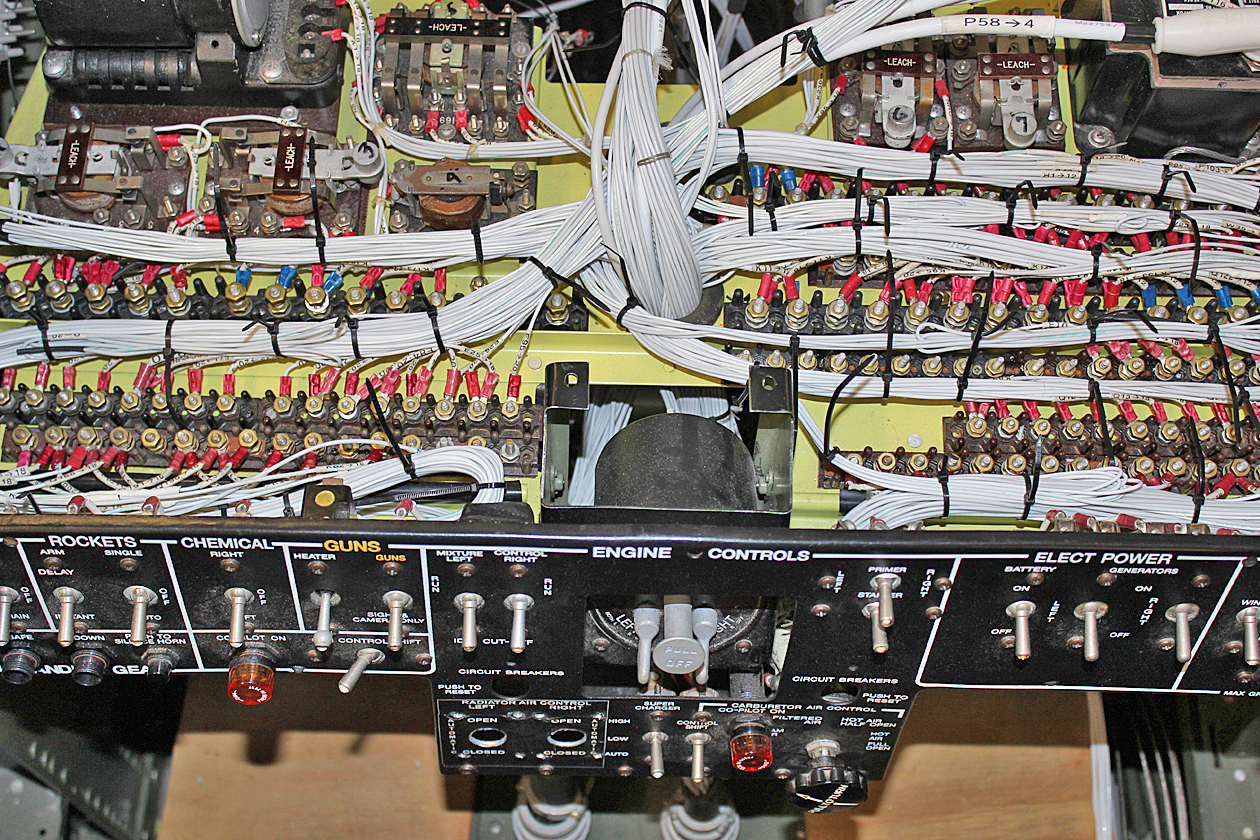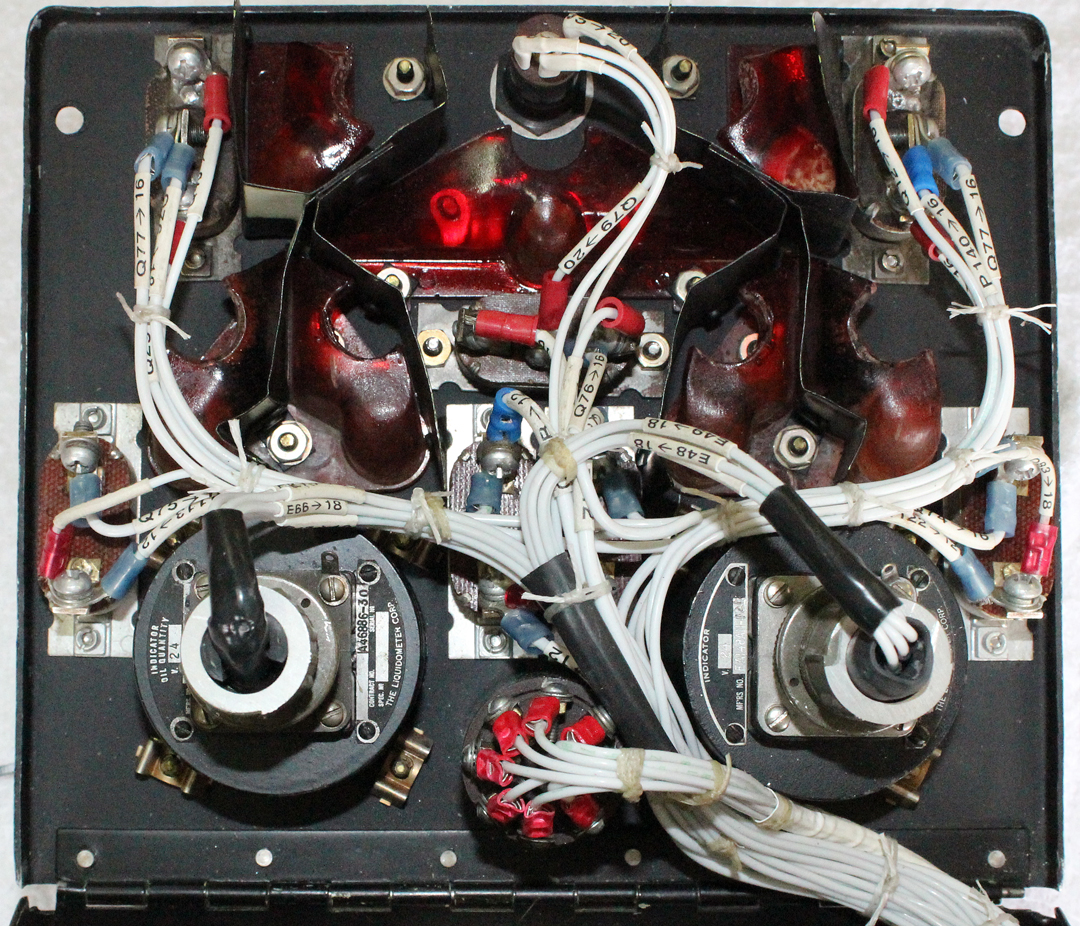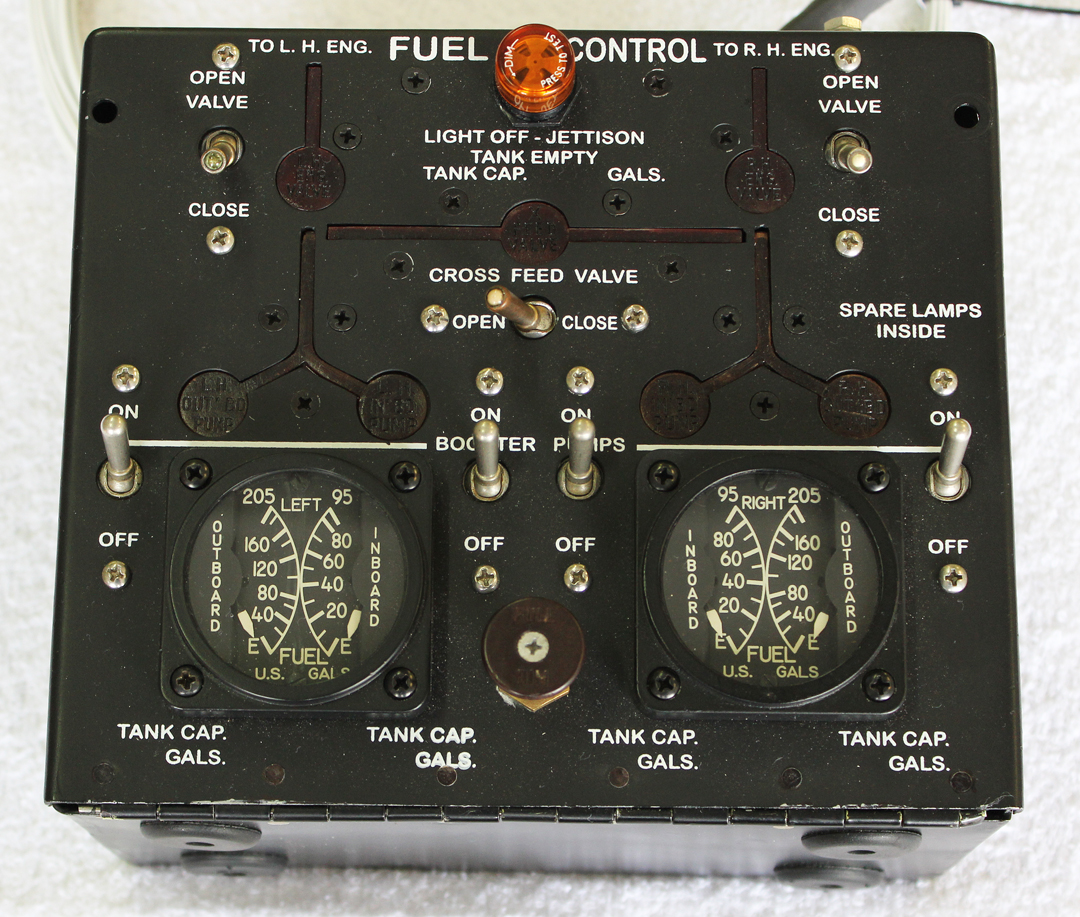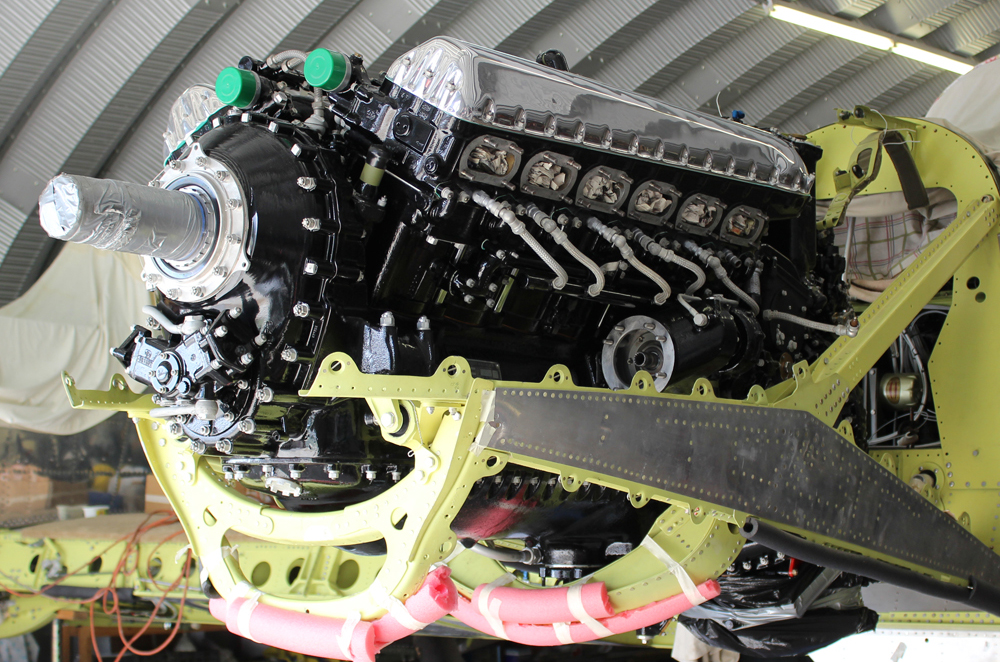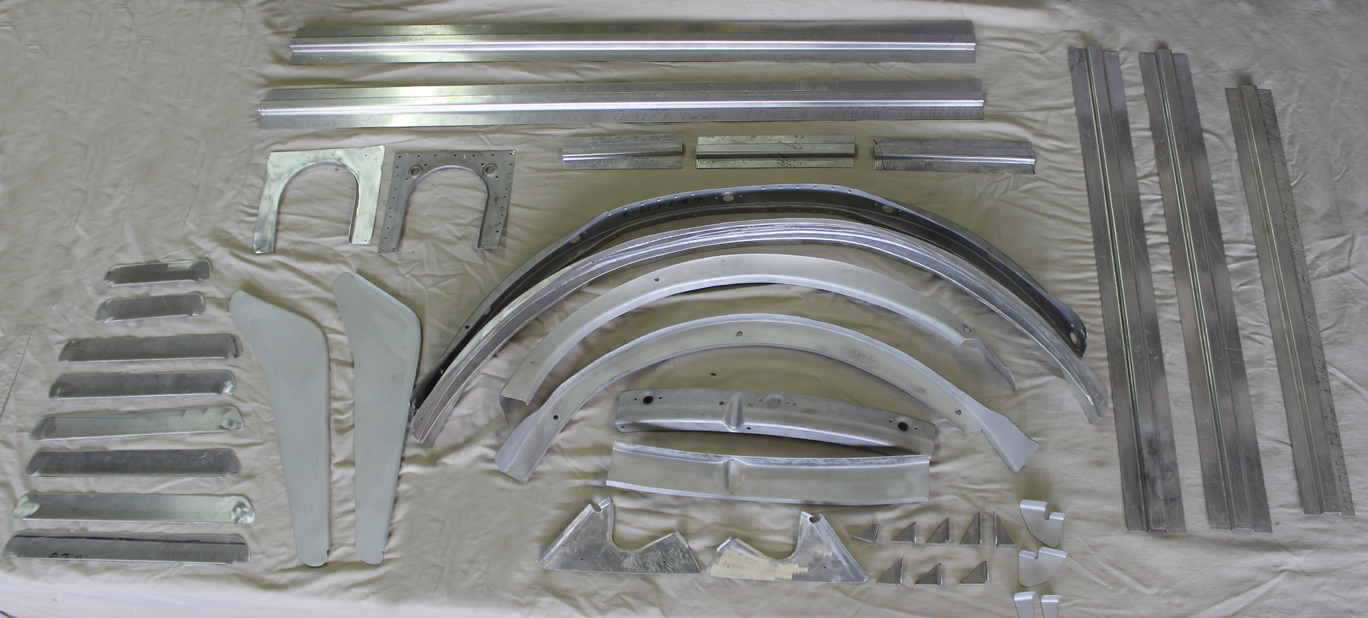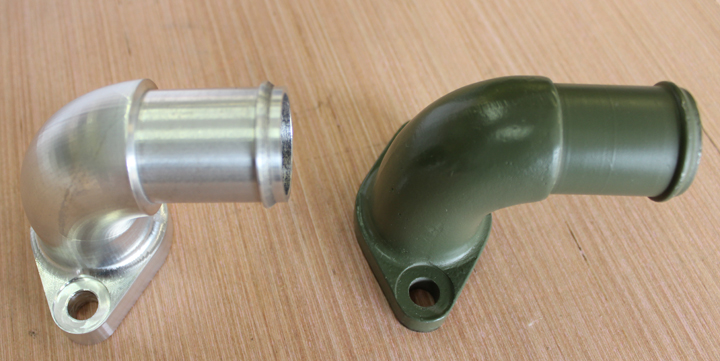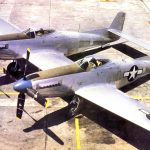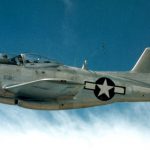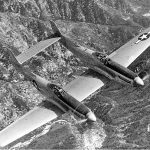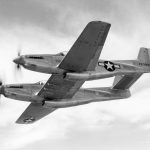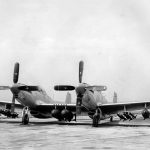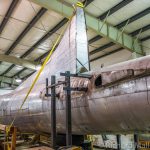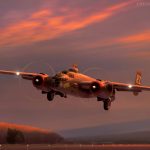WarbirdsNews has received the latest XP-82 Twin Mustang restoration update from Tom Reilly at his workshop in Douglas, Georgia. Here’s what they’ve been up to this month!
Wings/Ailerons/Flaps
The final skinning and completion of the lower part of both outboard wings is now complete. The sheet metal team is doing the final fitting and riveting of the last outboard wing bulkhead. This outboard bulkhead holds the structural 10-32 nut plates that the wing tip attaches to. The drop-down pitot mast (airspeed indicator) has been test-fitted and completed. It is now at the cad plate shop and expected back any day now.
The sewing of the fabric gap-seal canvas is being completed. These fabric gap-seals create a barrier so that the airflow over and under the wings will not be able to transition through the gap between the aileron and the trailing edge of each wing.
Fuel Tanks/Fuel Systems
Now that the wing skinning is complete, the four outboard tanks can now be permanently installed. The fuel capacity is 205 gallons total for each outboard wing, and there is a 95 gallon tank in each side of the center section, giving a total fuel capacity of 600 U.S. gallons. All of the fuel feed and fuel vent lines, along with the cross-feed check valves are now permanently installed along with the electrical conduits and internal wiring that run through or near the fuel tank bays, i.e. boost pumps (four) and liquidometers (six).
Electrical
The electrical team has been hooking up all of the electrical connections in both cockpits. They are about two-weeks away from completion, and at that time, Reilly’s team can put power on the ship and final-check each system. When the electrical system is final-checked and accepted, then the restoration team will install the completed instrument panels with their OHC (Overhauled Condition) instruments.
The fuel control box, which controls everything to do with fuel, i.e. boost pumps, fuel gauges, fuel shut-offs/cross-feed valves and drop tank(s), is now electrically bench-checked, completed and ready to be installed. This will be happen once the final testing of all the other circuits has been successfully proven.
Engines
The left-hand engine is now permanently installed, with the right-hand engine being installed next week, and all of the overhauled accessories will be installed in their respective positions on each engine, i.e. generators, governors, tach generators, fuel and vacuum pumps. Both overhauled engines came from Vintage V12s with the overhauled carburetors mounted.
Engine Cowlings
The sheet metal crew has started duplicating the ribs for a pair of right-hand upper and lower engine cowlings.
Many thanks again to Tom Reilly for the update! You can learn more about the project on their blog HERE. Please be sure to check back with WarbirdsNews in October for the next installment in the story following the XP-82′s road to recovery!







